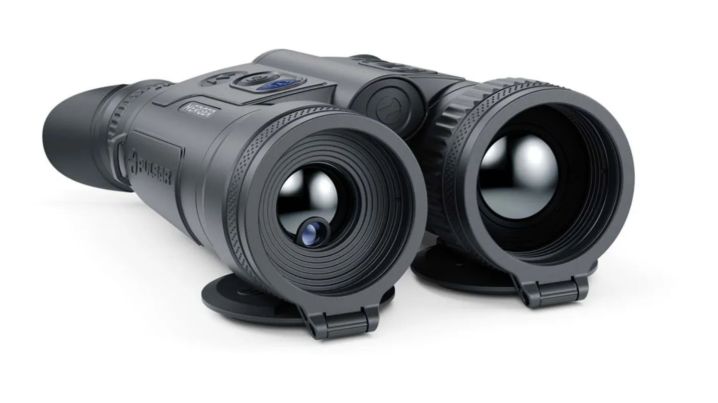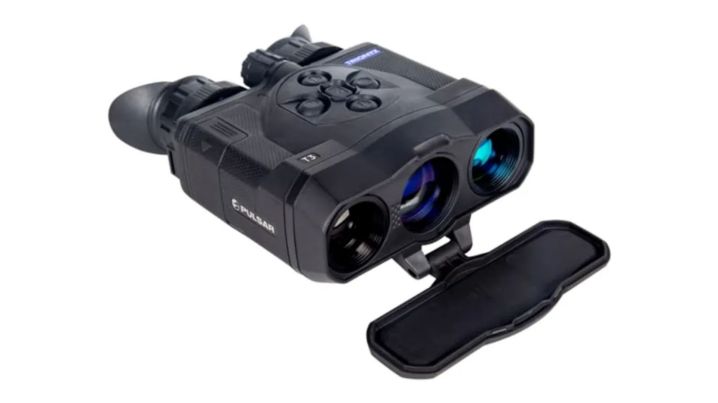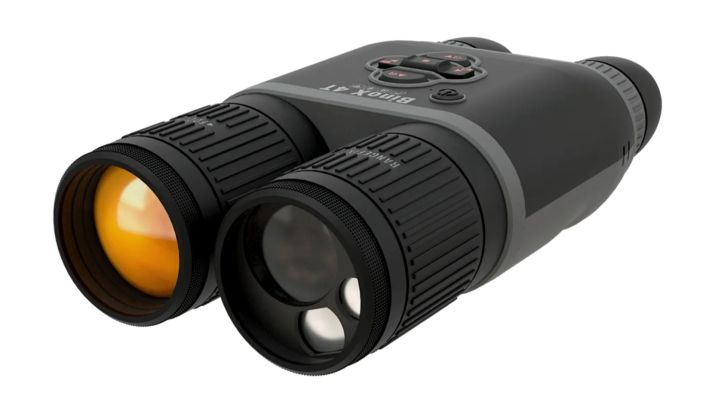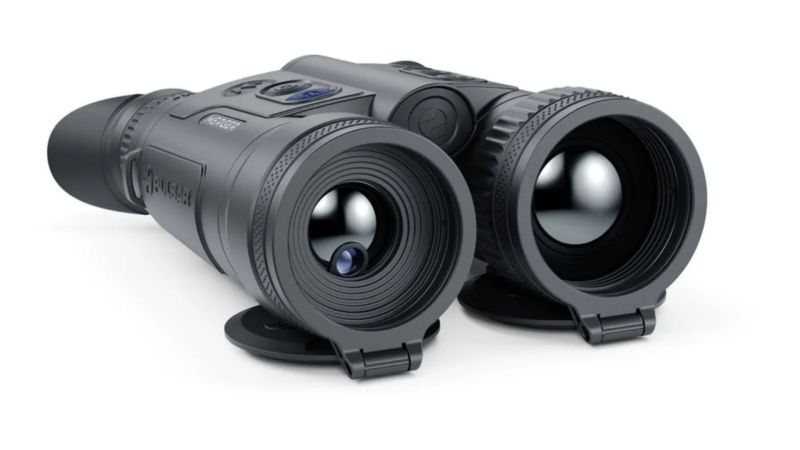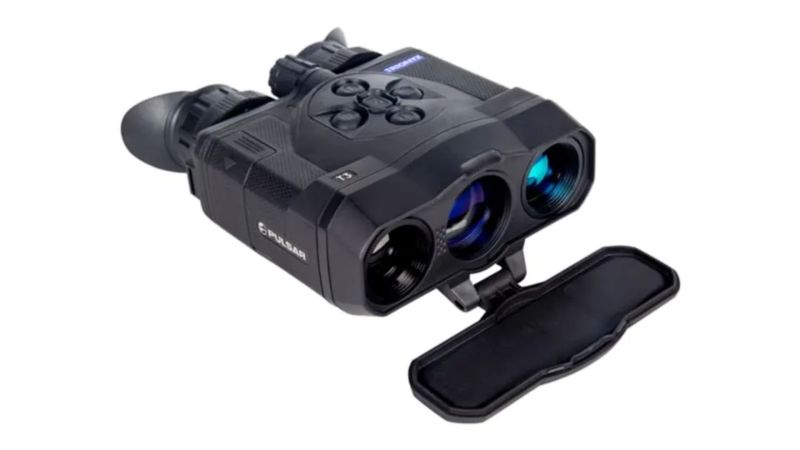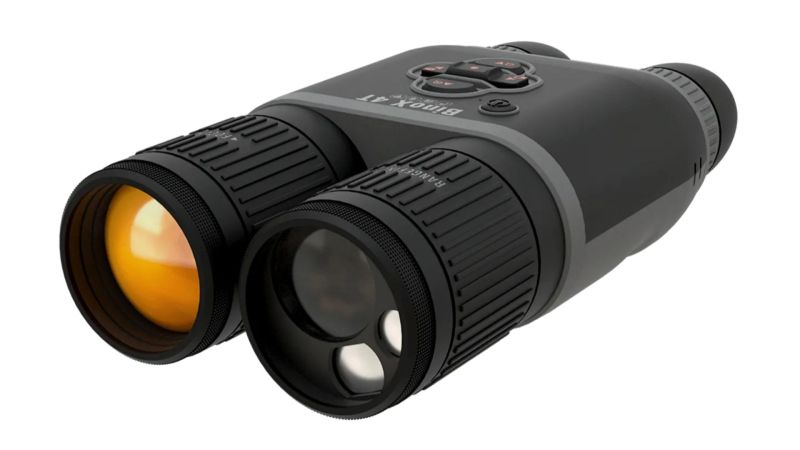We may earn revenue from the products available on this page and participate in affiliate programs.
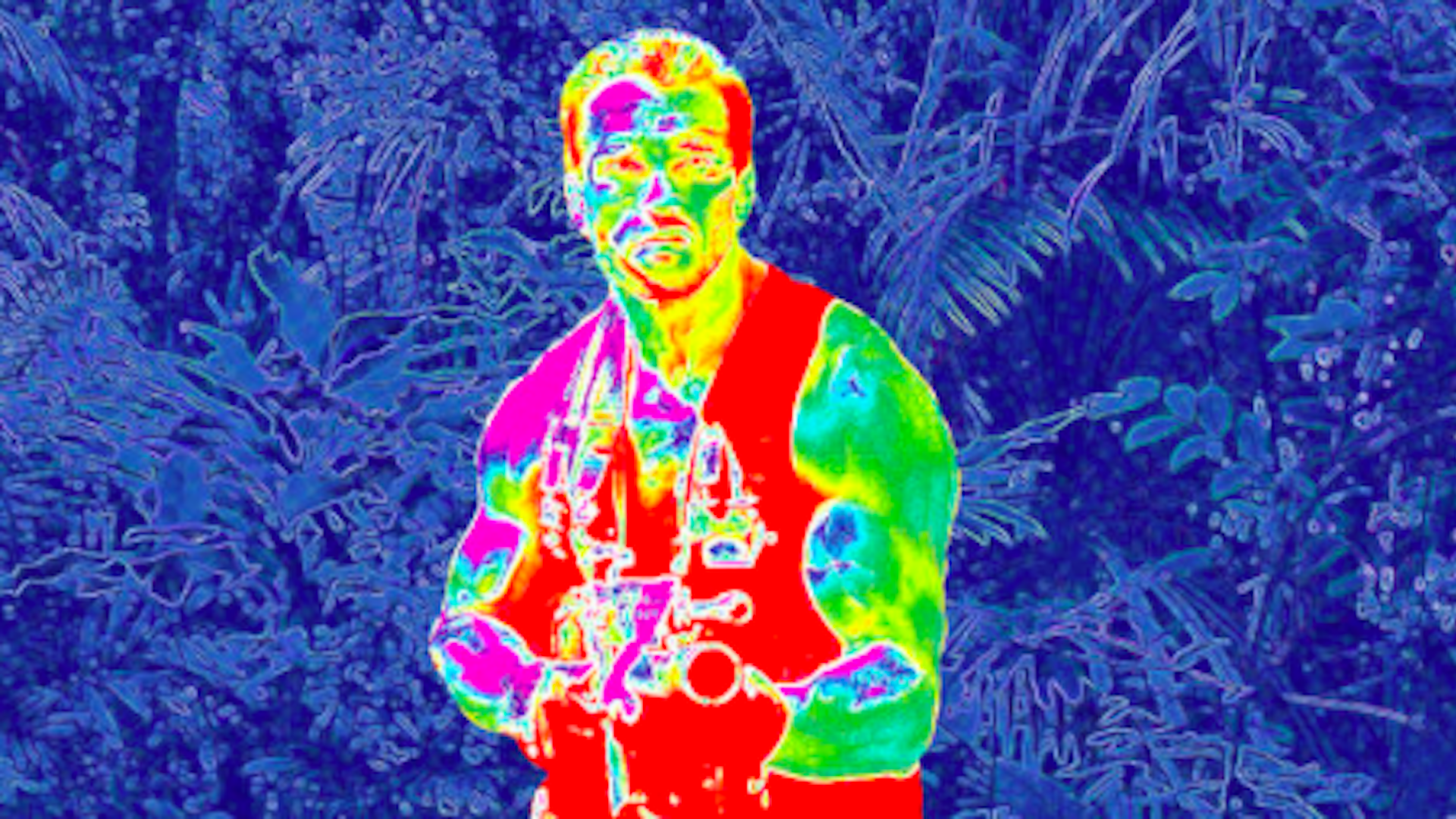
If you’ve seen any of the Predator films, then you already know the advantages of thermal binoculars. They essentially give you Predator vision. For those who don’t know, the alien species Yautja, colloquially known as “predators,” see on the infrared spectrum. Comparatively, humans’ visible spectrum lands between infrared and ultraviolet light. Therefore, we need thermal imaging devices to get that same predator perspective.
Infrared (IR) technology is designed to interpret the world by creating an image that utilizes variation in IR energy that is emitted by all objects. Night vision, by contrast, requires ambient light to be amplified for display. Night vision is hampered by low illumination environments and is useless when zero ambient light is available. Thermal optics are not limited by this and are truly day or night, all-weather capable. Due to their broad application, today’s thermal binoculars offer displays with peripheral information, an integrated laser rangefinder, and multiple color palettes to suit your needs.
Without inundating you with too much technological jargon, we will arm you with the necessary information needed to purchase what we consider to be the best thermal binoculars.
- Best Overall: Pulsar Merger LRF XP50
- Best Value: Pulsar Trionyx T3 Multispectral Binoculars
- Editor’s Choice: ATN Binox 4T 640 Thermal Binoculars
Best Overall
Pulsar Merger LRF XP50
Best Value
Pulsar Trionyx T3 Multispectral Binoculars
Editor’s Choice
ATN Binox 4T 640 Thermal Binoculars
Things to consider before buying thermal binoculars
Thermal optics have a broad application, so as the consumer, you’ll need to assess your own needs and expectations for this purchase. For hunting, they offer an incredible capability in animal detection and identification. For law enforcement, it’s an invaluable piece of kit for surveillance. As a homeowner who likes to observe wildlife or check in on your garden at night, you might not feel the need to have the larger 640×480 sensor and higher digital magnifications. Try to pair your needs to the capabilities of the device.
Thermal sensors
The quality and capability of any thermal optic start with the size and sensitivity of the thermal sensor. Sensor resolution is measured in pixels. Current premium sensor components will measure 640×480 or 384×288. Equally as important to a sensor’s pixel dimensions is its thermal sensitivity. Thermal sensitivity is measured in millikelvin (mK). This measurement, often referred to as Noise Equivalent Temperature Difference (NETD), determines the quality of an image a sensor can produce due to its ability to differentiate minute variations in thermal energy. A sensor that can detect temperature differences of 50 mK is good, but one that can detect less than 30 mK is excellent. Once that thermal information is received, it’s sent to the onboard processing unit which converts that data into an internal display, providing you with an image you’ll understand.
Display
The back end of these devices — the end that receives the converted IR energy that our brains comprehend — is the display. Thermal optics have come a long way from the legacy liquid crystal display (LCD) that provided us with mediocre but serviceable imaging. Modern thermal binoculars utilize OLED and AMOLED technology. Having a premium thermal sensor is lost if you lack the onboard computer processors and cutting-edge display capabilities that maximize image quality. AMOLED provides superior brightness and resolution performance at reduced power requirements, further benefiting battery life.
Features
Outside of image quality, many product features are nearly standardized. Thermal binoculars are generally equipped with a laser rangefinder and IR illuminator. These optics have varying levels of digital magnification for extending their detection and identification ranges. Most are equipped with the ability to internally record and stream both thermal video and pictures to your phone. Thermal vision is traditionally in a black hot or white hot scale, but manufacturers today offer devices with up to eight different color palettes. This gives you the ability to customize your image to suit your needs and comfort. ATN offers additional features that really cater to the shooting/hunting community.
FAQs about thermal binoculars
Q: Which is better, thermal or night vision?
A: Thermal versus night vision is an interesting debate. Night vision offers a level of acuity that thermal devices can’t offer yet. Night vision is dependent on ambient light. As ambient light or illumination levels diminish, so does the level of detail in a field of view.
Thermal optics do not require any light. They use IR energy that is emitted from all objects, day or night. The more sensitive a thermal device’s sensor is, the crisper and more detailed an image it can display. Premium components can differentiate between smaller variations in IR energy offering a more refined image.
Both have advantages, so it generally comes down to application and environmental conditions.
Q: Can thermal binoculars help with hunting?
A: Yes, and they are a tremendous asset in the field. Quality thermal optics can offer detection ranges of over 1,000 meters/yards. At closer ranges (200 yards or less), they offer a very precise image of your quarry, giving you better information on whether to harvest an animal or not. Many thermal binoculars have integrated laser range finders and IR illuminators, allowing you to range and illuminate targets for shooters using rifles outfitted with night vision scopes. These devices can also assist you in tracking and recovering animals, as well.
Q: Can thermal imaging see in the dark?
A: Yes. Thermal imaging is not inhibited by the lack of ambient light. Because it uses IR energy, the time of day doesn’t matter. One consideration to think about is thermal or IR crossover. This is a phenomenon that occurs twice a day. Thermal crossover is the lack of contrast between an object and its surroundings. This can occur in the early morning and early evening as emitting IR energy becomes more uniform for a short period of time. Precipitation will also dampen the contrast of IR energy.
Q: What is the difference between thermal and infrared?
A: Both thermal and infrared are generally used synonymously. Thermal energy occupies the infrared spectrum of light. Thermal energy wavelengths are measured in microns. The longer wavelengths are what thermal binoculars use to compose an infrared image. “Mid-IR” shorter wavelengths are used by common household items like television remotes.
Final thoughts
The Pulsar Merger LRF XP50 is the new standard bearer in thermal binoculars. The other optics listed are just as capable and offer their own specific set of features. The American-made ATN Binox 4T is loaded with features, and Pulsar’s Trionyx offers unique versatility with its multispectral design. Both ATN and Pulsar are on the leading edge of innovation, now if we could get to them to work on shoulder-mounted plasma casters …
Methodology
Thermal binoculars are technical pieces of gear — everything from the research and development side to the manufacturing is intriguing. Initially, I relied heavily on my personal knowledge and experiences as a U.S. Army Apache pilot. I contacted multiple manufacturers, reviewed countless spec sheets, and even had the privilege of touching base with a couple of engineers who work on thermal imaging devices professionally.
For simplicity’s sake, I wanted to keep the information for potential consumers straightforward without overloading on details that were more “neat to know” rather than “need to know.” First and foremost, I sought out the most reputable brands in the industry. I then deconstructed thermal binoculars into their most important components: thermal sensors, displays, and features. Thermal binoculars are expensive, and quality optics will always come with a premium price tag. I’m a firm believer that you get what you pay for and will prioritize respected manufacturers who stand behind their products.
